Elizabeth Murray curated by Carroll Dunham and Dan Nadel
Dec 10 – Jan 29, 2017
Past: 333 Broome St
Installation view, Elizabeth Murray curated by Carroll Dunham and Dan Nadel, Canada, New York, 2016
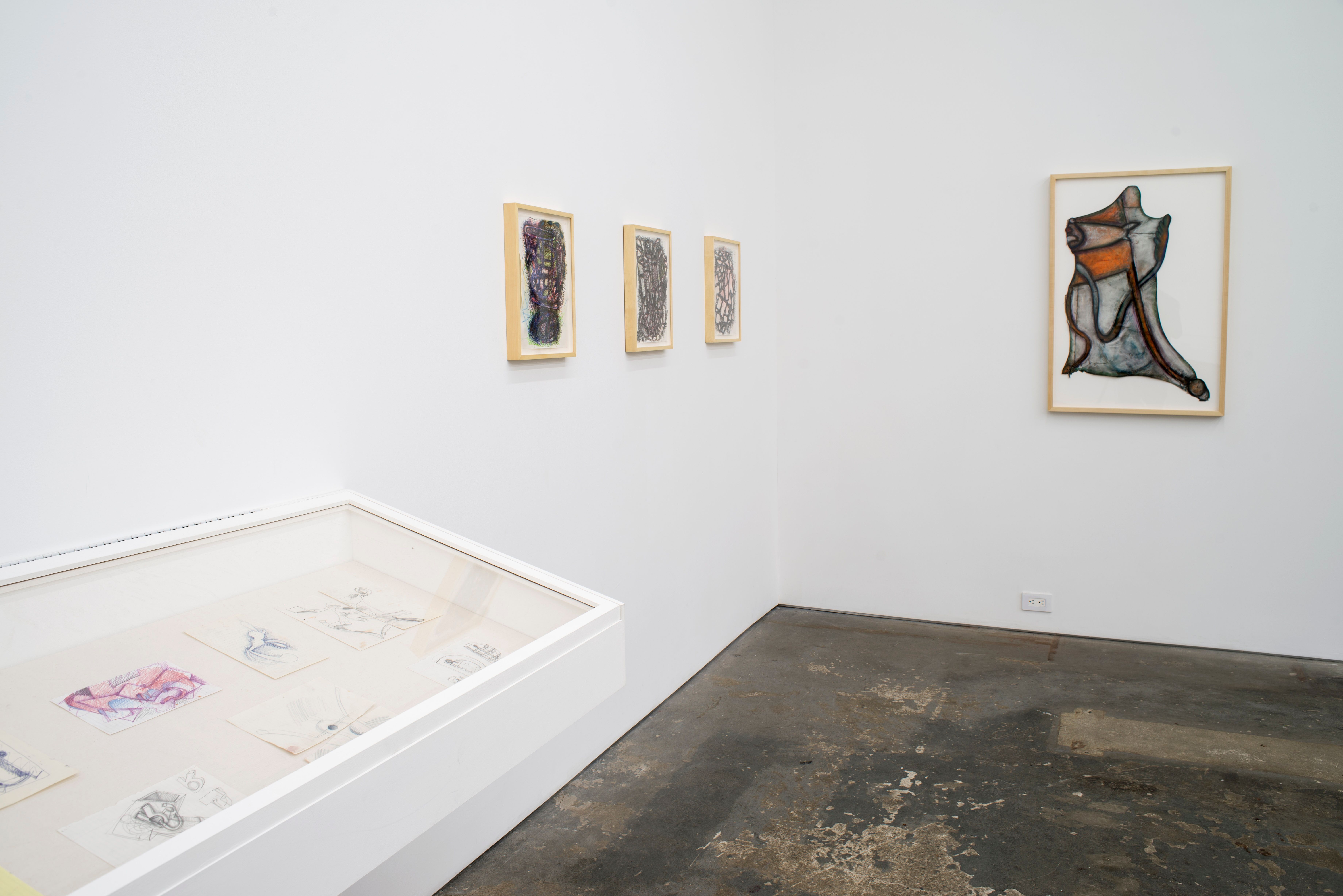
Installation view, Elizabeth Murray curated by Carroll Dunham and Dan Nadel, Canada, New York, 2016
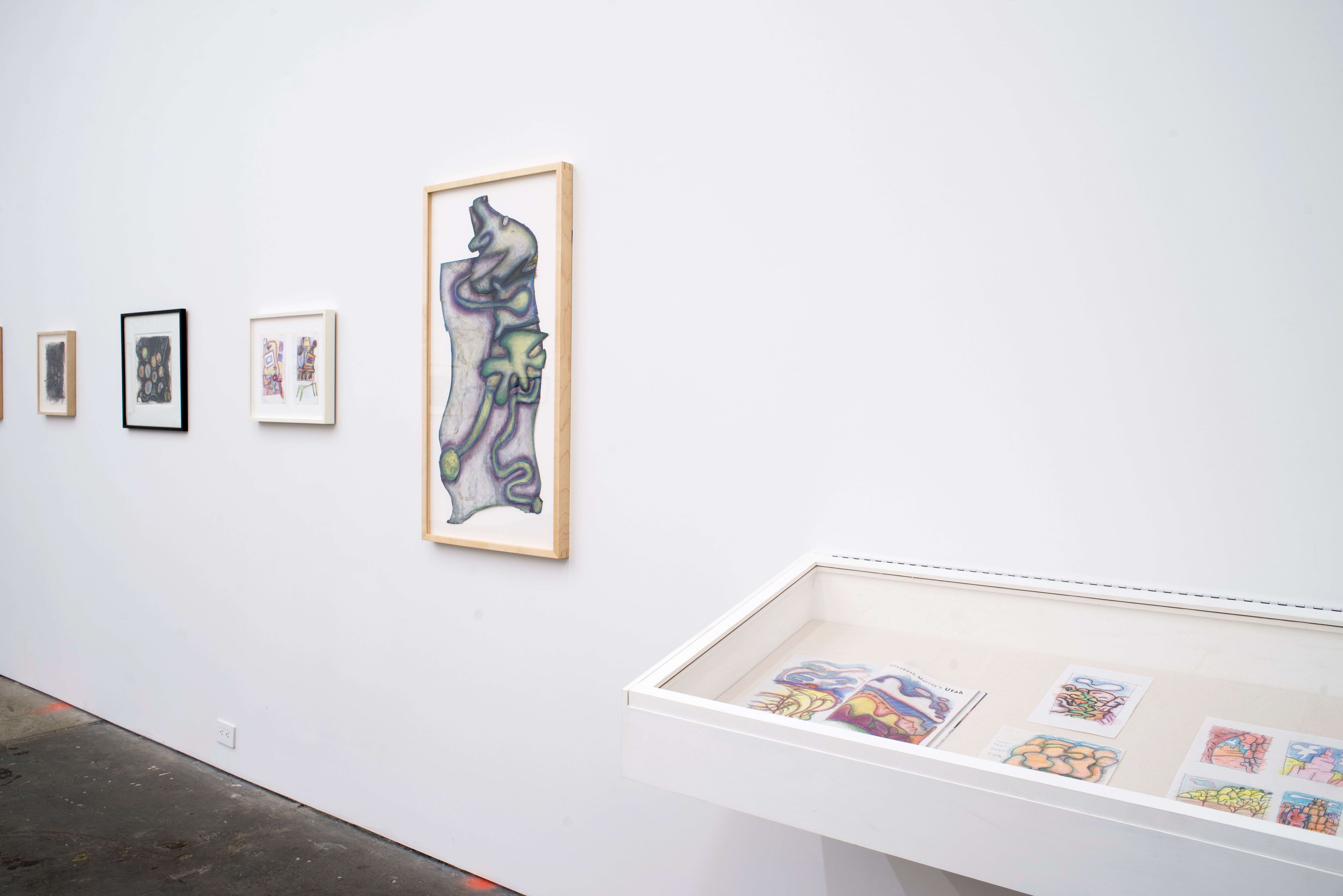
Installation view, Elizabeth Murray curated by Carroll Dunham and Dan Nadel, Canada, New York, 2016

Installation view, Elizabeth Murray curated by Carroll Dunham and Dan Nadel, Canada, New York, 2016

Installation view, Elizabeth Murray curated by Carroll Dunham and Dan Nadel, Canada, New York, 2016
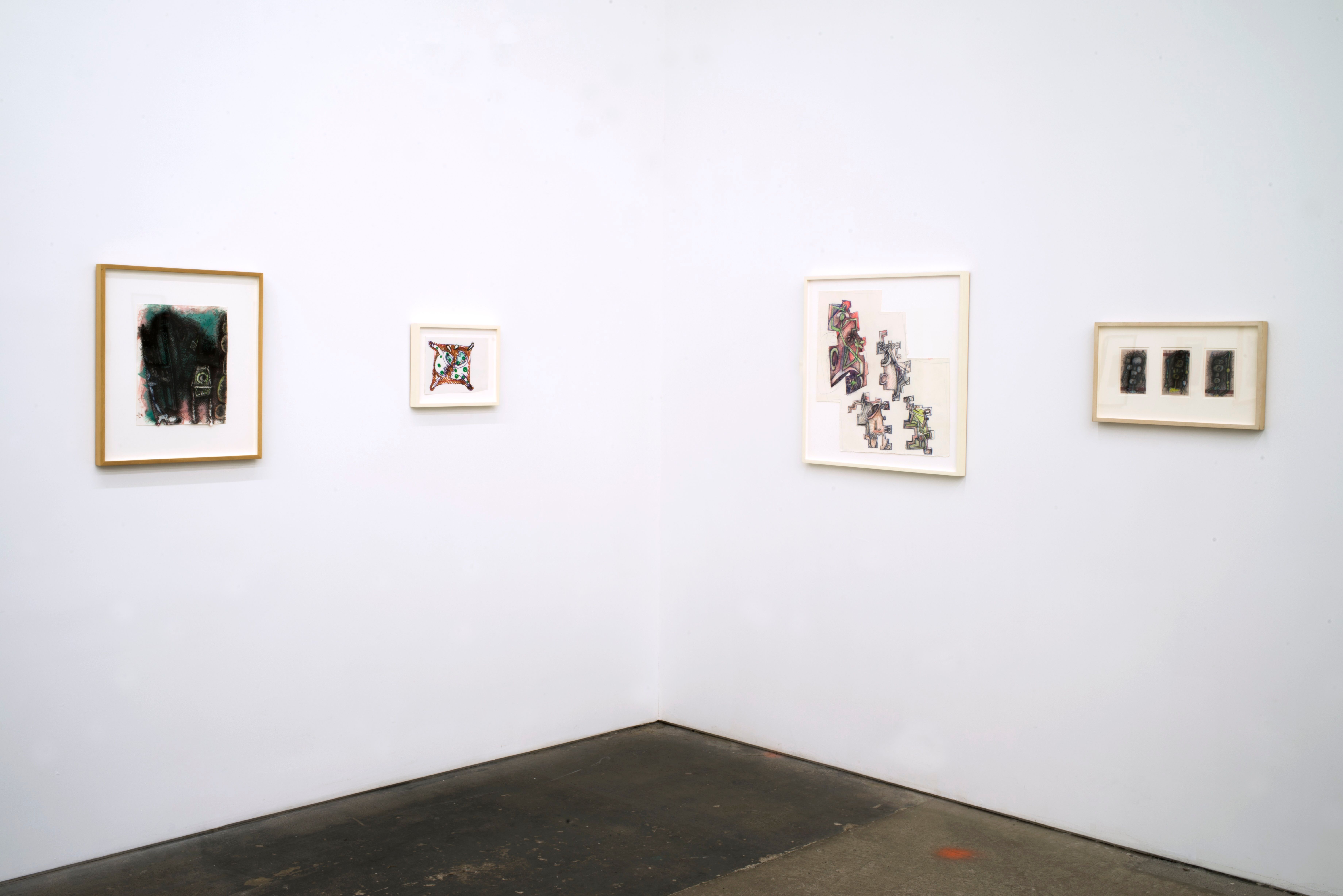
Artworks

Elizabeth Murray,
"For "Dream of Life",
1988,
50 ⅜ × 28 ¼ in (127.95 × 71.76 cm)
Pastel on paper

Elizabeth Murray,
Dust Tracks,
1993,
68 × 46 × 10 in (172.72 × 116.84 × 25.40 cm)
Oil on canvas on painted wood
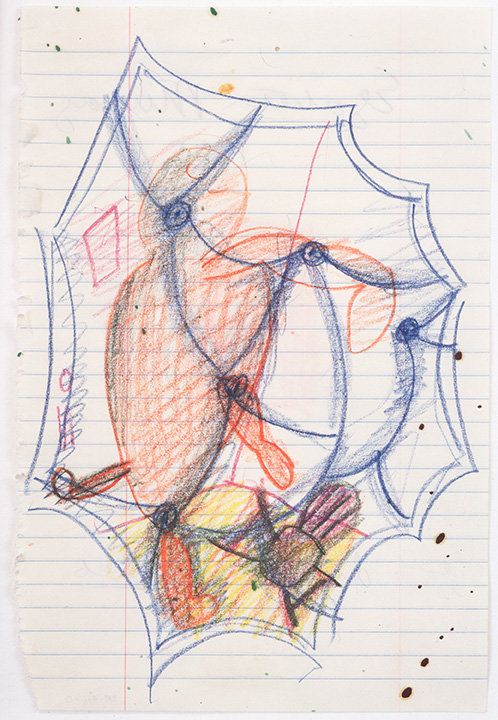
Elizabeth Murray,
"For "Web",
1991,
7 ½ × 5 ¼ in (19.05 × 13.34 cm)
Colored pencil on paper
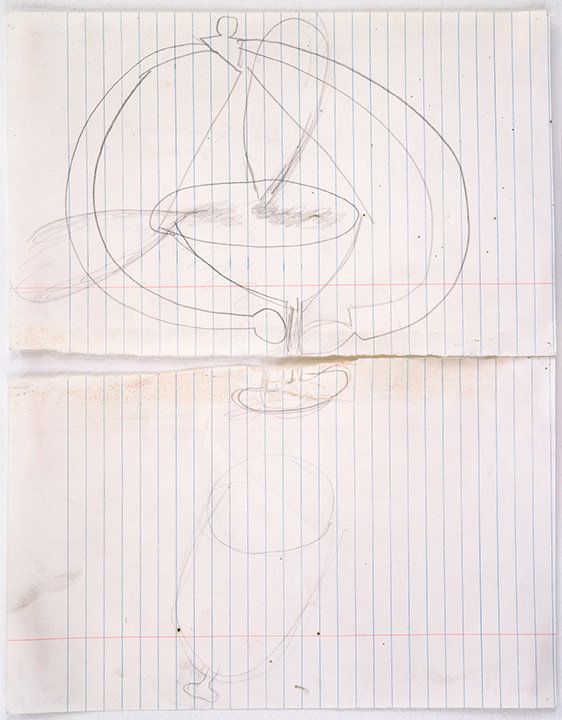
Elizabeth Murray,
"For "Sunday Morning",
1985,
9 ¾ × 7 ⅝ in (24.77 × 19.37 cm)
Pencil on two sheets paper recto/verso

Elizabeth Murray,
Untitled,
1987,
11 ½ × 8 ¼ in (29.21 × 20.96 cm)
Pencil on paper
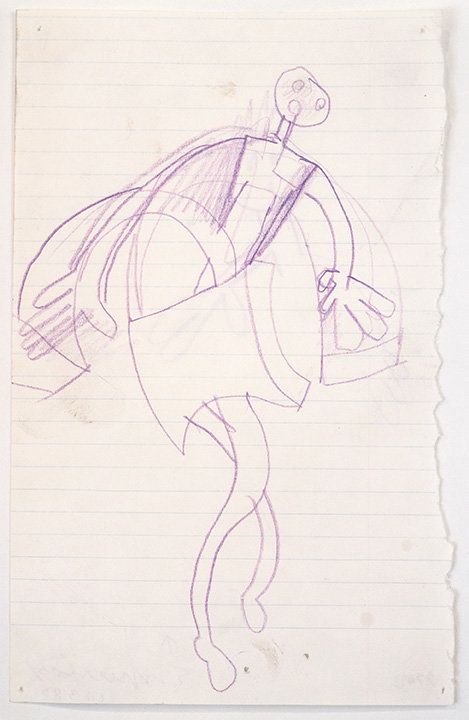
Elizabeth Murray,
"For "Flesh Table",
1986,
7 ¾ × 4 ¾ in (19.69 × 12.07 cm)
Colored pencil on paper
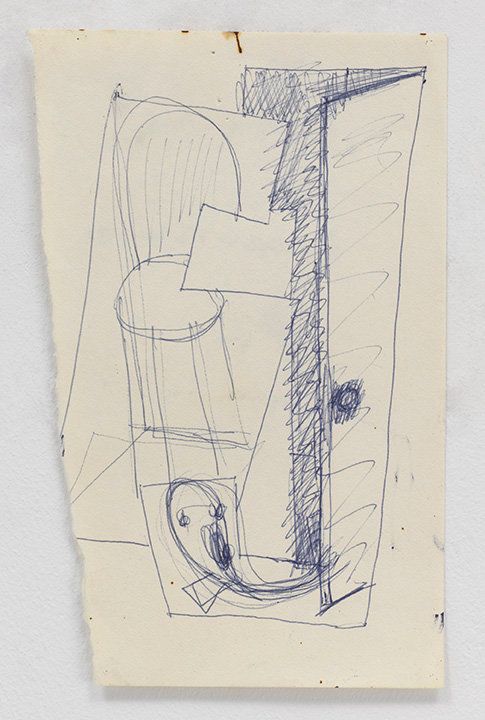
Elizabeth Murray,
"For "Which Way Out",
1984,
8 ½ × 5 ½ in (21.59 × 13.97 cm)
Ballpoint pen on paper
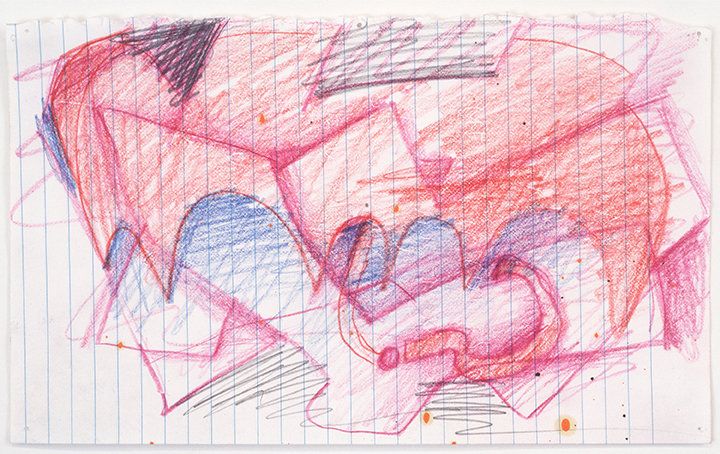
Elizabeth Murray,
Why? Painting,
1987,
4 ⅝ × 7 ½ in (11.75 × 19.05 cm)
Pencil and colored pencil on paper

Elizabeth Murray,
"For "Pompeii",
1987,
7 ⅝ × 4 ¾ in (19.37 × 12.07 cm)
Ballpoint pen and ink on paper
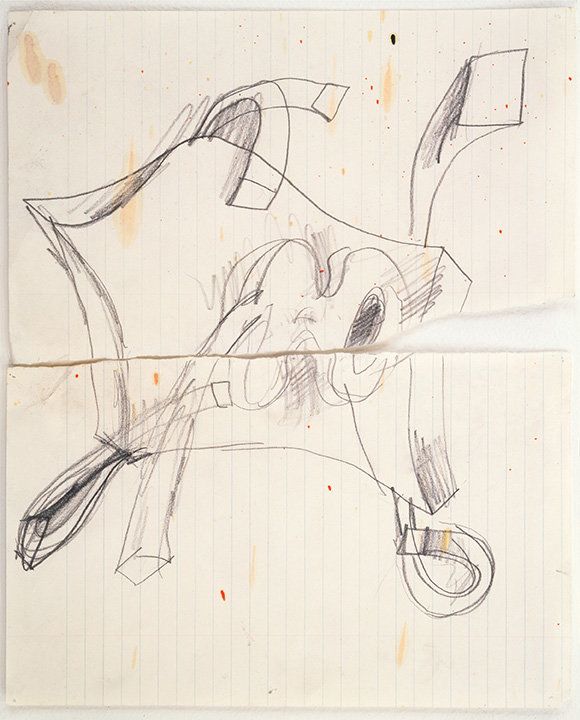
Elizabeth Murray,
"For "Don't be Cruel",
1985,
7 ¾ × 9 ½ in (19.69 × 24.13 cm)
Pencil on two sheets paper
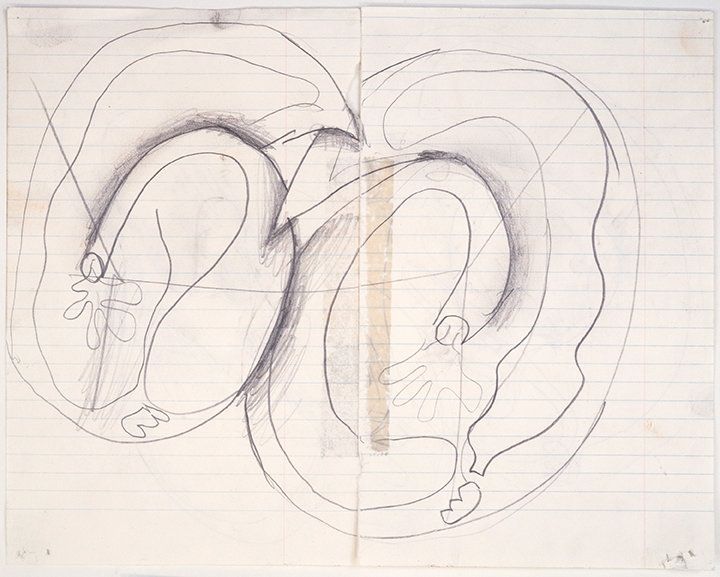
Elizabeth Murray,
Untitled,
1987,
7 ¾ × 9 ¾ in (19.69 × 24.77 cm)
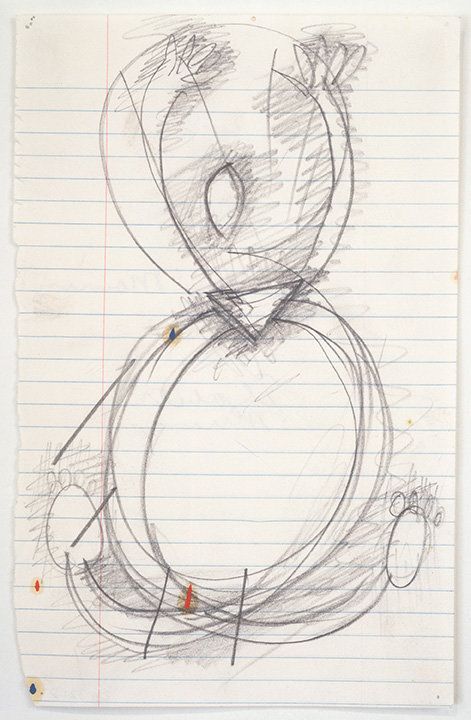
Elizabeth Murray,
Sunday Morning,
1985,
7 ⅝ × 5 in (19.37 × 12.70 cm)
Pencil on lined notebook paper
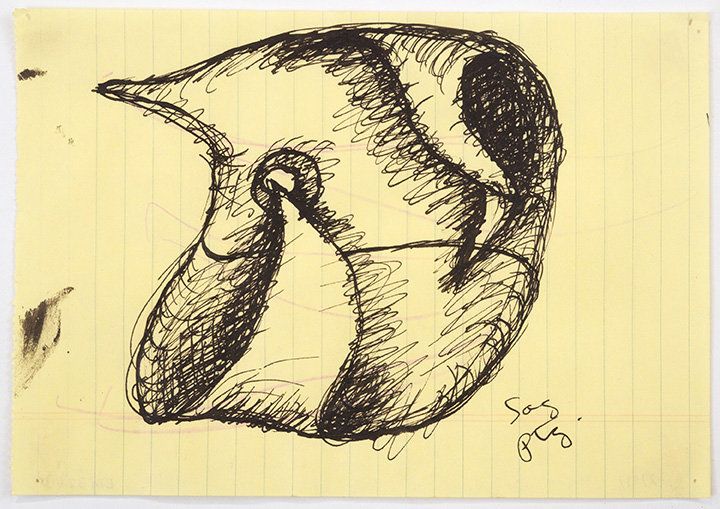
Elizabeth Murray,
Sag Painting,
1988,
5 × 7 ⅛ in (12.70 × 18.10 cm)
Ink and colored pencil on paper

Elizabeth Murray,
Try,
1988,
4 ⅞ × 7 ⅝ in (12.38 × 19.37 cm)
Pencil on paper
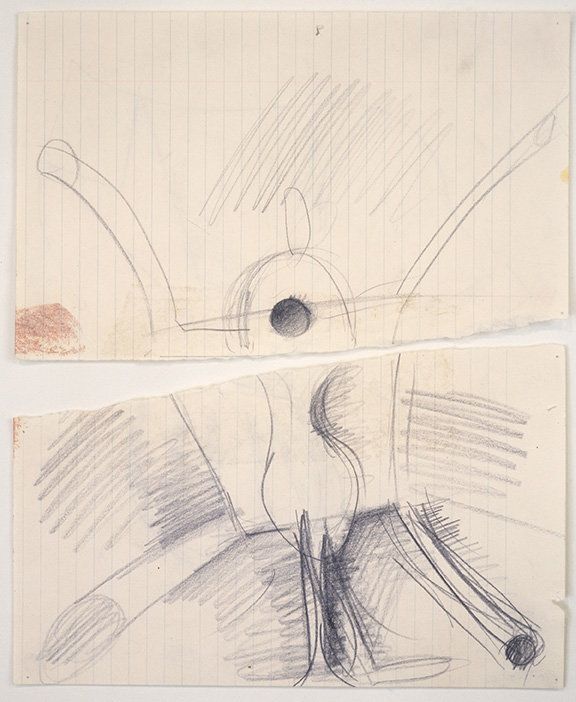
Elizabeth Murray,
"For "Don't be Cruel",
1985,
9 ¼ × 7 ¾ in (23.50 × 19.69 cm)
Pencil on two sheets paper recto/verso
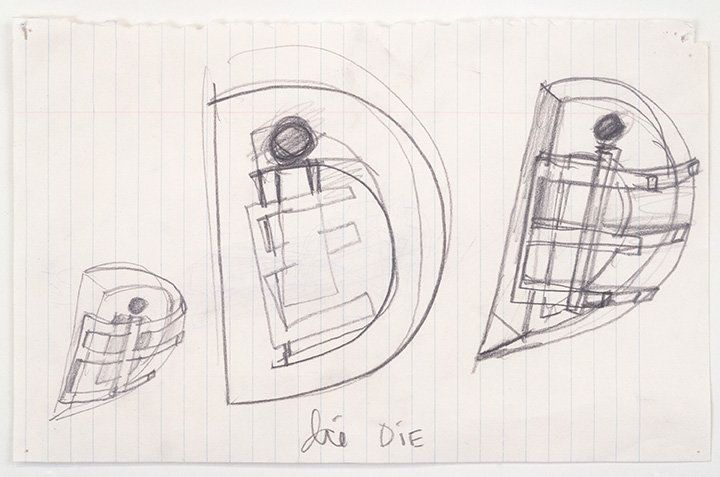
Elizabeth Murray,
Die,
1987,
4 ⅞ × 7 ¾ in (12.38 × 19.69 cm)
Pencil on paper
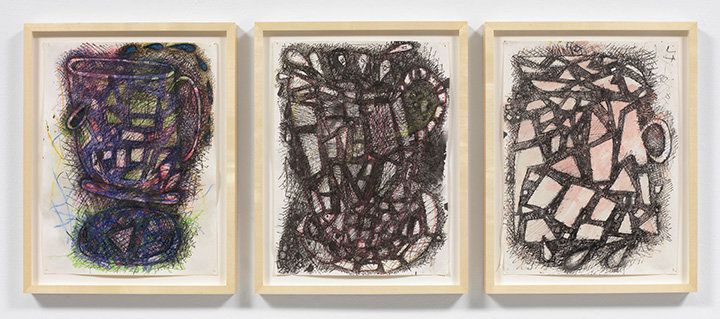
Elizabeth Murray,
Things Fall Apart,
1995,
EACH: 13 ½ × 10 ¼ in (34.29 × 26.04 cm)
left: crayon, watercolor and ink on paper center: crayon, watercolor and ink on paper right: watercolor and ink on paper three sheets,
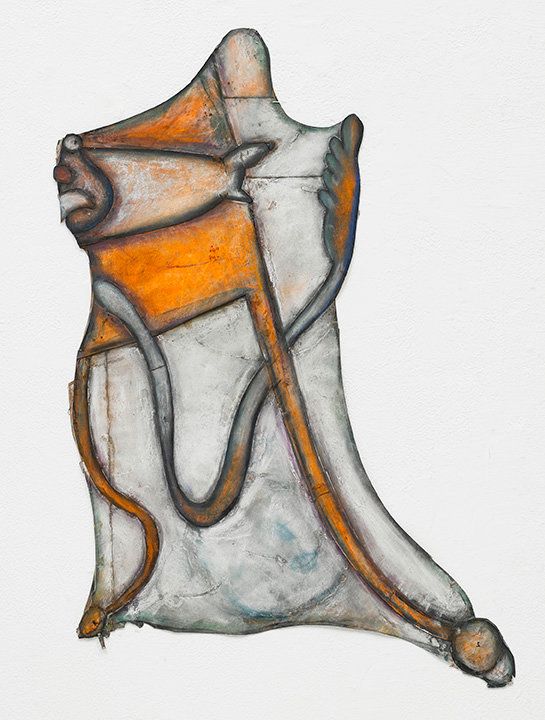
Elizabeth Murray,
Whozat #4 (Drawing for Whazzat #4 Print),
1995,
35 × 21 ½ in (88.90 × 54.61 cm)
Pastel and charcoal on collaged paper

Elizabeth Murray,
"For "Don't be Cruel",
1988,
7 ⅝ × 9 ¾ in (19.37 × 24.77 cm)
Ballpoint ink and colored pencil on 2 sheets paper

Elizabeth Murray,
Bed + Note,
1994,
10 ½ × 9 in (26.67 × 22.86 cm)
India ink, silkscreen ink and gouache on paper with collage

Elizabeth Murray,
Swoop,
2004,
11 × 14 in (27.94 × 35.56 cm)
Felt tipped pen on paper

Elizabeth Murray,
Untitled (study for Tangled),
1989,
8 ⅛ × 5 ⅝ in (20.64 × 14.29 cm)
Colored pencil on notebook paper
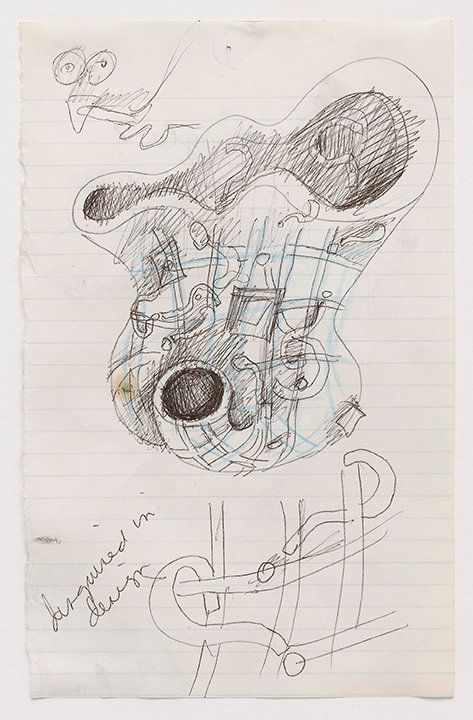
Elizabeth Murray,
Untitled (study for Tangled),
1989,
7 ½ × 5 in (19.05 × 12.70 cm)
Ballpoint pen and colored pencil on ruled paper

Elizabeth Murray,
Little Kiss,
1996,
14 × 14 ½ in (35.56 × 36.83 cm)
Casein, watercolor and glue on paper with collage
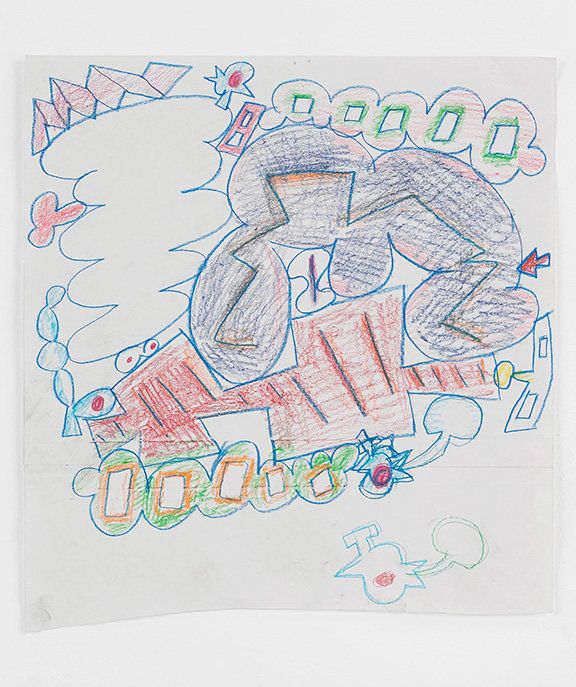
Elizabeth Murray,
"For "Bop",
2002,
12 × 11 in (30.48 × 27.94 cm)
Colored pencil and pencil on paper

Elizabeth Murray,
"For "Dots" (Ahrenhraiz),
1999,
10 ½ × 7 ¾ in (26.67 × 19.69 cm)
Colored pencil on paper
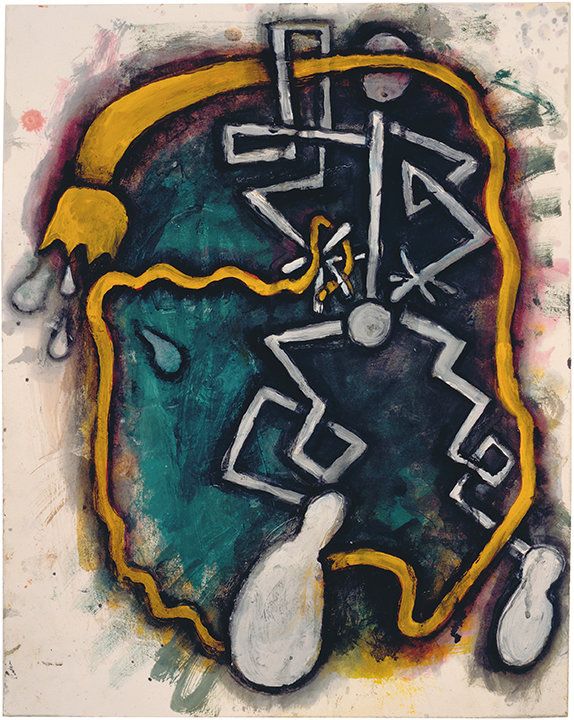
Elizabeth Murray,
"For "The Unscrew Painting",
1993,
14 × 11 ⅛ in (35.56 × 28.26 cm)
Casein, watercolor and ballpoint pen on paper

Elizabeth Murray,
Whozat #2 (Drawing for Whazzat #1 Print),
1995,
28 ½ × 18 ½ in (72.39 × 46.99 cm)
Pastel and charcoal on collage paper
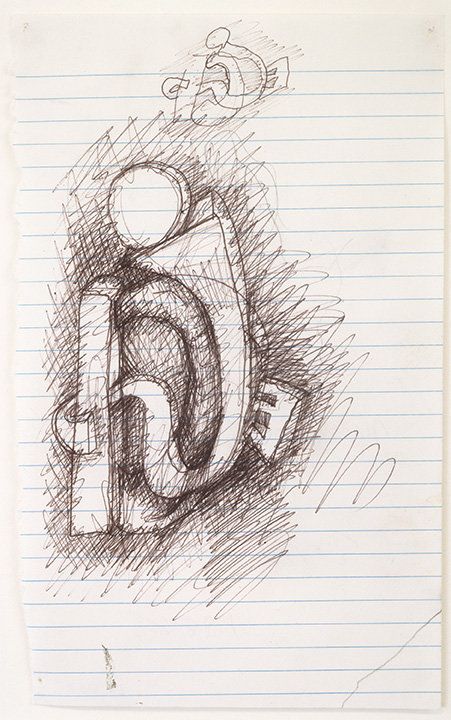
Elizabeth Murray,
Notes for Die,
1988,
7 ⅝ × 4 ¾ in (19.37 × 12.07 cm)
Ballpoint pen on paper
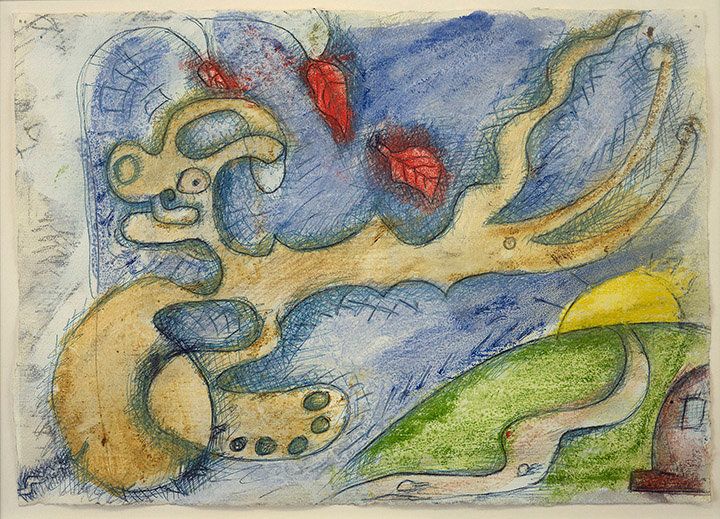
Elizabeth Murray,
"For "Bounding Dog",
1993,
9 ½ × 13 ¼ in (24.13 × 33.66 cm)
Watercolor and crayon on paper

Elizabeth Murray,
Brick with Heart,
2003,
7 ⅜ × 10 ¾ in (18.73 × 27.31 cm)
Pastel and charcoal on collaged paper

Elizabeth Murray,
Bed,
2004,
13 ¼ × 10 ½ in (33.66 × 26.67 cm)
India ink, gouache, colored pencil and printed paper on spiral edge paper

Elizabeth Murray,
Untitled,
1988,
9 ¾ × 9 ¾ in (24.77 × 24.77 cm)
Watercolor on paper
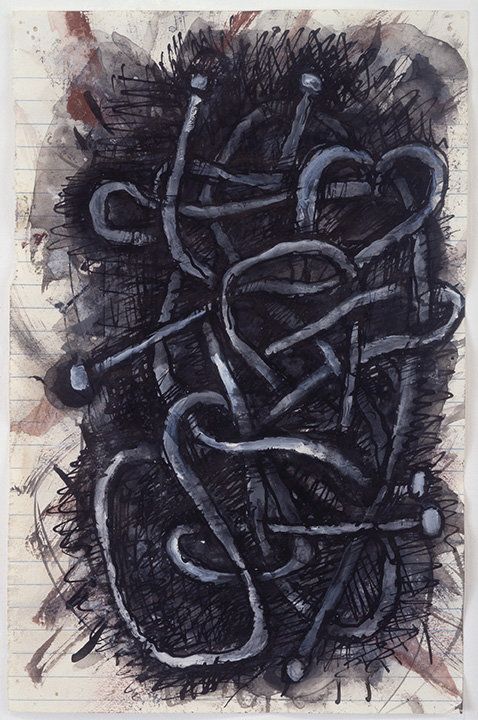
Elizabeth Murray,
Untitled,
1990,
7 ½ × 4 ⅞ in (19.05 × 12.38 cm)
India ink, pen and gouache on paper
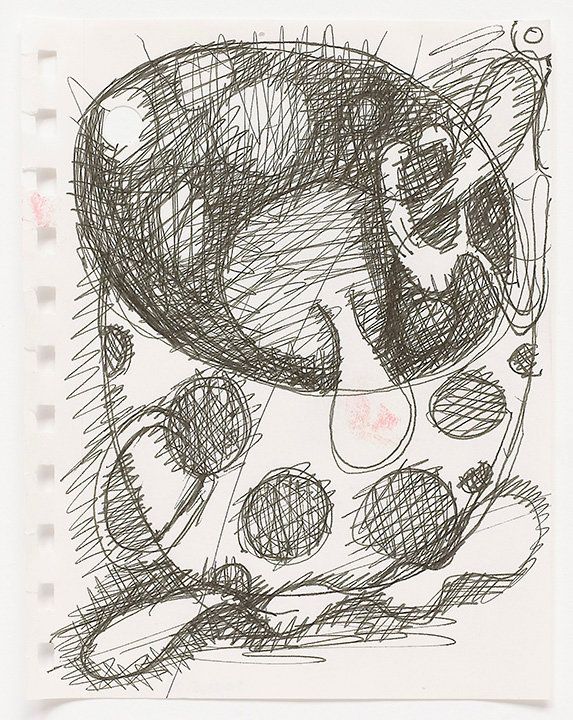
Elizabeth Murray,
"For "Dots" (Ahrenhraiz),
1999,
5 ¾ × 4 ⅜ in (14.61 × 11.11 cm)
Ball point pen with pigment on paper

Elizabeth Murray,
Open Door,
1994,
14 × 11 in (35.56 × 27.94 cm)
India ink, casein and watercolor on paper with collage

Elizabeth Murray,
"For "Dots" (Ahrenhraiz),
1999,
7 ¾ × 10 ½ in (19.69 × 26.67 cm)
Marker and felt tip pen on paper

Elizabeth Murray,
Untitled,
1995,
22 × 22 in (55.88 × 55.88 cm)
Colored pencil on paper

Elizabeth Murray,
Ramada Drawing,
1992,
5 ¼ × 3 ¾ in (13.34 × 9.53 cm)
Pencil and colored pencil on paper
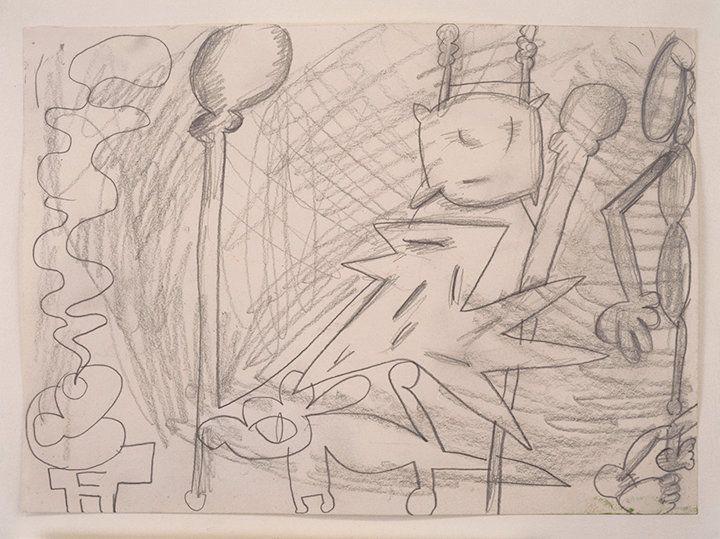
Elizabeth Murray,
"For "Look Back",
1995,
7 ⅞ × 10 ¾ in (20.00 × 27.31 cm)
Pencil on paper

Elizabeth Murray,
Untitled,
1990,
10 ½ × 8 ¼ in (26.67 × 20.96 cm)
Gouache and ink on paper with collage
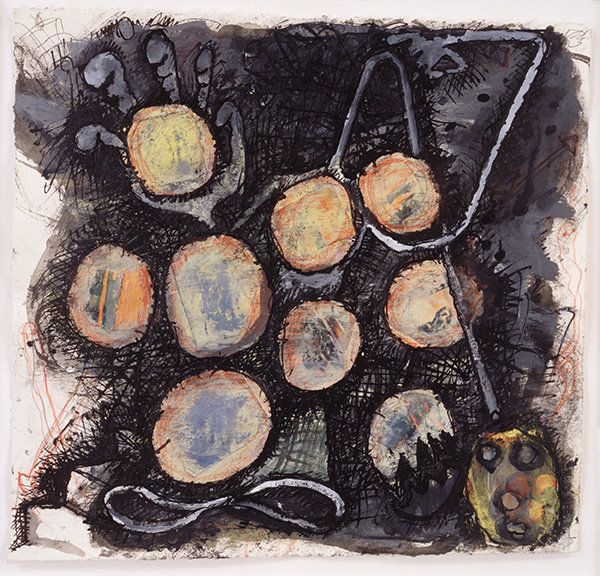
Elizabeth Murray,
Untitled,
1991,
10 ⅜ × 10 ¾ in (26.35 × 27.31 cm)
India ink, colored pencil and gouache on paper with collage

Elizabeth Murray,
"For "Another You" and Untitled,
1995,
Overall: 9 ¼ × 12 in (23.50 × 30.48 cm)
Colored pencil on paper
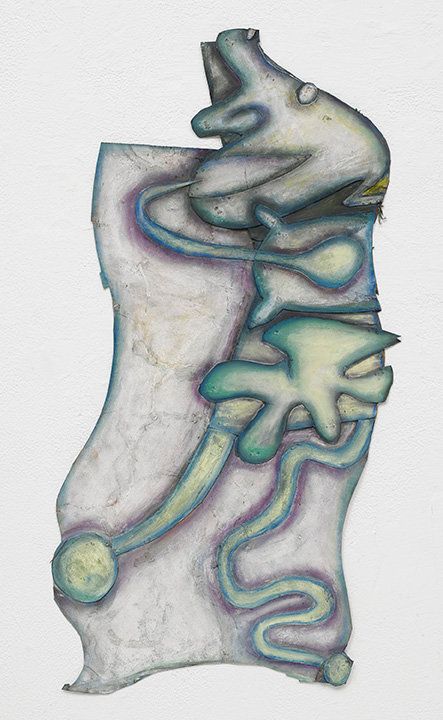
Elizabeth Murray,
Whozat #1 (Drawing for Whazzat #1 Print),
1995,
34 ¾ × 17 ½ in (88.27 × 44.45 cm)
Pastel and charcoal on collage paper
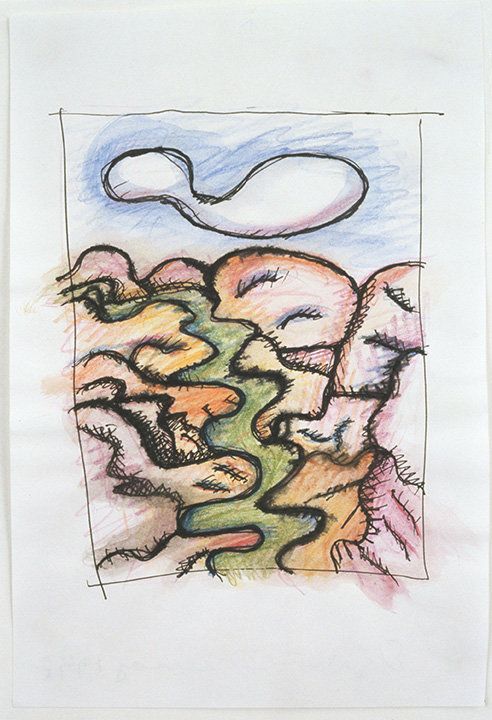
Elizabeth Murray,
Untitled,
1998,
8 ½ × 5 ¾ in (21.59 × 14.61 cm)
Colored pencil, ink and watercolor on paper
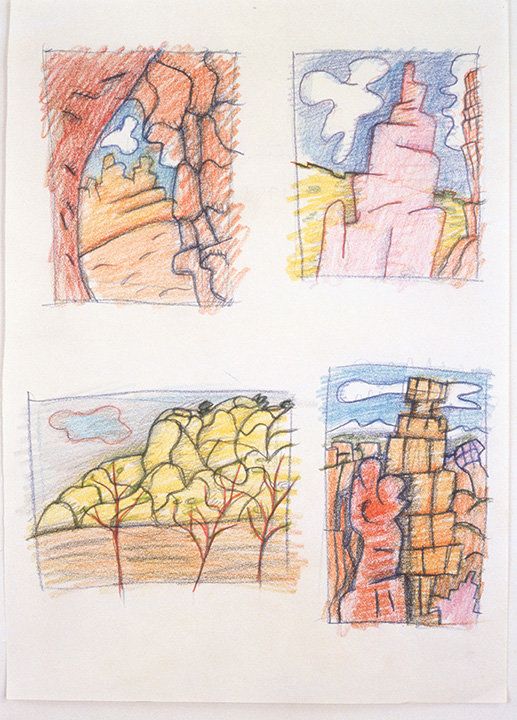
Elizabeth Murray,
Untitled,
1998,
12 × 8 ½ in (30.48 × 21.59 cm)
Colored pencil on paper
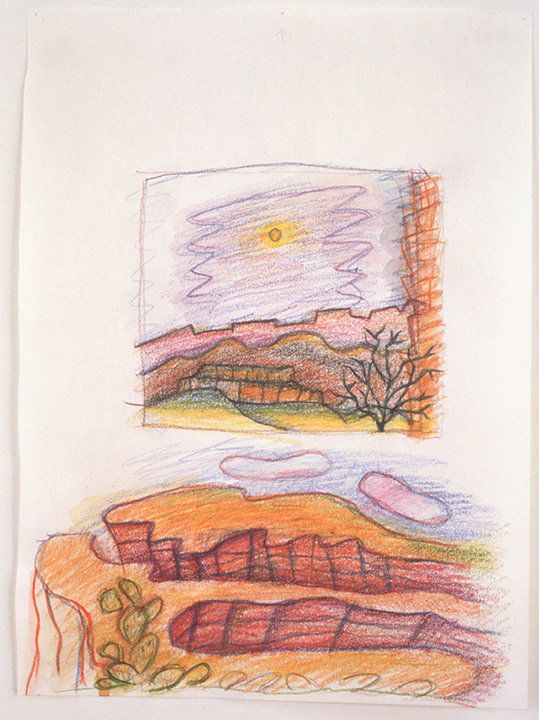
Elizabeth Murray,
Untitled,
1988,
10 ⅝ × 7 ⅞ in (26.99 × 20.00 cm)
Colored pencil and watercolor on paper
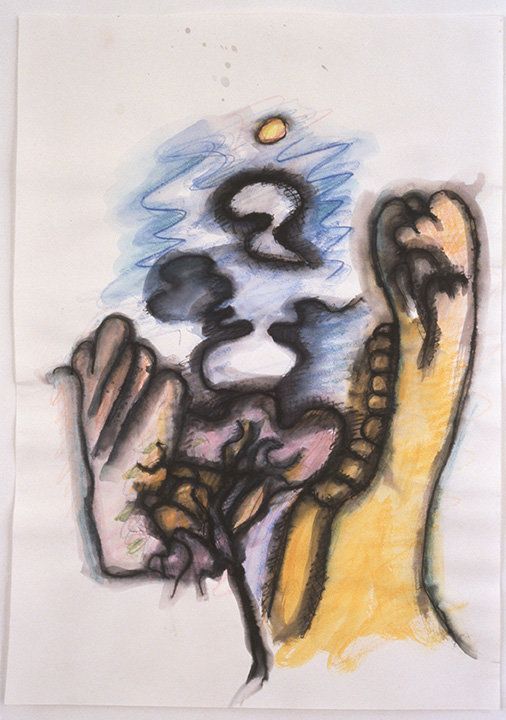
Elizabeth Murray,
Untitled,
1998,
12 × 8 ½ in (30.48 × 21.59 cm)
Ink, colored pencil and watercolor on paper

Elizabeth Murray,
Untitled,
1998,
11 × 11 ½ in (27.94 × 29.21 cm)
Color pencil, watercolor, and Tombo marker on paper
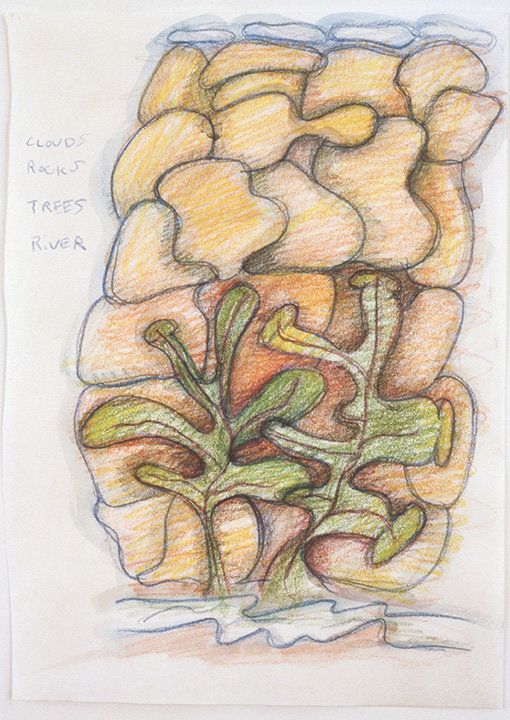
Elizabeth Murray,
Untitled (Clouds, Rocks, Trees, River),
1998,
10 ¾ × 7 ¾ in (27.31 × 19.69 cm)
Colored pencil and watercolor on paper
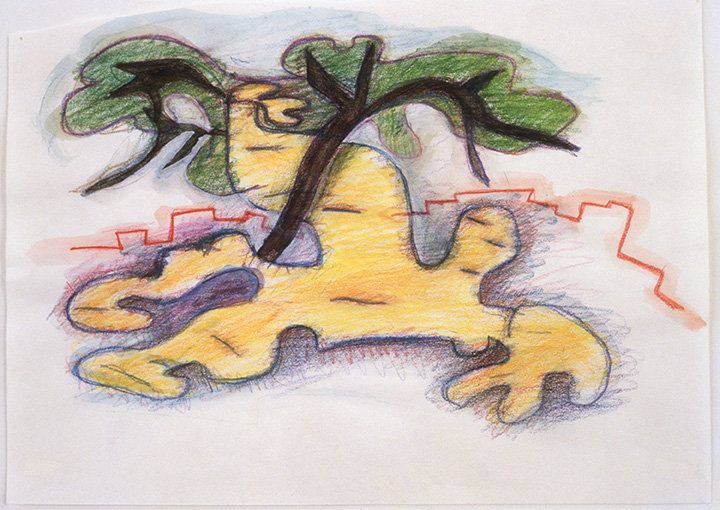
Elizabeth Murray,
Untitled,
1998,
7 ¾ × 10 ⅝ in (19.69 × 26.99 cm)
Pencil and watercolor on paper
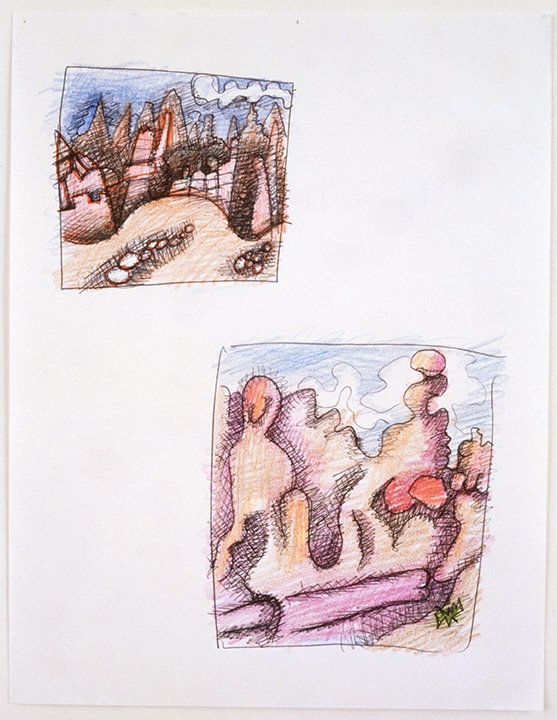
Elizabeth Murray,
Untitled,
1998,
11 × 8 ½ in (27.94 × 21.59 cm)
Colored pencil and ballpoint pen on paper
Press Release
“I remember something that happened when I was three years old that was fundamental. I was at a nursery school and the teacher sat me down to color with him. He took a big piece of paper and a big red crayon and he started to color, and I watched him go from the corner of the page coloring the whole page red, and I remember thinking, Wow, that is so incredible. Then I took a paper and the red crayon and I started to color with it, and it didn’t go as fast as it did with him, and I realized that there was some kind of challenge there. That was really intriguing to me, and I’ve often thought about that, a key fascination with the physicality of a surface being covered with a color. That transformation.” - Elizabeth Murray
This exhibition has been organized by Dan Nadel and Carroll Dunham. It grew out of their shared interest in Murray’s work from two different perspectives. Nadel came to Murray via her Chicago roots and saw her as both a rare “New York” artist who emerged in the 1970s, belonged to no school, and managed to be both successful and against the modernist grain. Dunham knew Murray and considers her an early influence on his work as well as a central and somewhat under-acknowledged participant in painting developments during the ’80s and beyond.
On view in this exhibition is one painting and over 40 drawings from the 1980s and 1990s. Murray’s compositions, rooted in solid geometry and a correspondingly rigorous sense of structure, always looked weightless, as though about to fly off the wall. In her intimate drawings one can appreciate her graphic inventiveness and the virtuosic, practiced, and confident mark-making that is uniquely hers. Her work embodied a completely original blend of sculptural physicality, painterly invention, and pictorial illusion.
Born and raised in Chicago, Murray graduated from the Art Institute in 1962, four years before the Hairy Who would emerge, but she shared both that group’s radically plural art historical education and a love of the balloon and rubber hose school of mid-20th century cartooning. From Chicago she went to Mills College, where the soon-to-be-Funk artists held sway, among them Robert Arneson and William T. Wiley. Then, after a short spell teaching in Buffalo from 1965 to 1967, she landed in a Manhattan painting environment dominated by the likes of Brice Marden and Robert Ryman. One has the sense that Murray imbibed the currents of the 1960s, worked them out in the 1970s and emerged in the 1980s entirely her own artist.
She said it best herself: “It’s comical, actually, how people forget things and how they are only able to look at one tiny aspect. But that attitude actually affected me deeply, not so much the art, but the experience made a huge impact on me. How things change, one year it’s this powerful, heavy-duty stuff, Abstract Expressionism, and the next year it’s soup cans, and life is fun and games. And then the whole camp thing in the early sixties with Tommy and short skirts, and two years later we’re protesting the Vietnam War. You have to figure out who you are within the culture. You pursue things, I think, in some state between total consciousness and total unconsciousness.” Murray was distrustful of theory, of appropriation, of being overtly anything other than an artist. This binds it to some of the artists here at Canada, and to a current among young artists nationally -- artists who seek a non-binding way forward through figuration and drawing and painting.
The drawings in this exhibition fall into four categories: Scrappy works that are truly just notes -- in the way we might write “laundry” she would draw a figure; studies for paintings that fill in the subjects and colors and schemes of a painting, such as Tangled, 1989-90, Bounding Dog, 1993-4, and Yikes, 1982; a set of studies for an illustration job for Travel and Leisure magazine that highlight her rendering chops as applied to an assigned subject; and finally, drawings that were shown in the gallery as complete works. In this last group of works, Murray often used pastel to build colors and textures that she would smudge, remove, or revisit with the tip of a crayon in order to get a crisp edge. This process resulted in layered imagery that gives texture and an illusion of depth that jibes with her shaped canvases. The Whozatt series of 1995, for example, collapses the body in variable spaces, but with a tight focus and constrained series of palettes and tones -- a genteel play on green hues in the first drawing, and a hot pulse of yellow and red in the second.
Murray’s interest in mundane objects as subjects was often interpreted in “feminist” terms, which while partially true was also a way to diminish their formal power and connection to an entire history of the (male) use of these subjects within the history of Western painting. “I’m very conscious of those terms ordinary or domestic and their implications,” Murray said. “Cézanne painted apples and tablecloths and clocks. The Cubists painted still lifes. But when I paint the still life, the critique of my work is that I’m making this feminist statement about the home, and that critique is political. I’m sure that’s true with writing too, that the themes that women take up are looked at in a particular, political light, just as Zola, or Hugo were seen as political because they wrote about ordinary people and ordinary subjects. The reason the domesticity thing has always irritated me is because I feel like I’m being shoved back into the home. Many people refer to my cup shapes as “teacups.”
Now is a good time to visit this work and this mindset. Taking in a sincere sense of joy and seriousness is something rare but crucial to our well-being. –CD and DN
We wish to thank Douglas Baxter and Pace Gallery for their encouragement and collaboration.
All Elizabeth Murray quotes are from her interview with Jessica Hagedorn, Bomb no. 62, 1998.
Elizabeth Murray (b. 1940, Chicago; d. 2007, New York) received a B.F.A. from the Art Institute of Chicago (1962) and an M.F.A. from Mills College in Oakland, CA (1964). In addition to her teaching position at Bard College (Annandale-on-Hudson, NY), Murray held visiting faculty appointments at a number of American colleges and universities. Murray first exhibited at the Paula Cooper Gallery in 1974. Murray’s work has been the subject of nearly sixty solo exhibitions in galleries around the world since her New York City debut in the 1972 Annual Exhibition: Contemporary American Painting at the Whitney Museum of American Art and has participated in six Whitney Biennial exhibitions since 1973. Elizabeth Murray’s work can be found in over forty public collections in the United States.
Press
David Frankel "Elizabeth Murray." Artforum March 2017
Blake Gopnik "Elizabeth Murray’s Rare Moment As an Illustrator." Artnet January 18, 2017
"Goings On About Town : Elizabeth Murray." The New Yorker January 2017
Thomas Micchelli "Elizabeth Murray, Force of Nature." Hyperallergic January 13, 2017